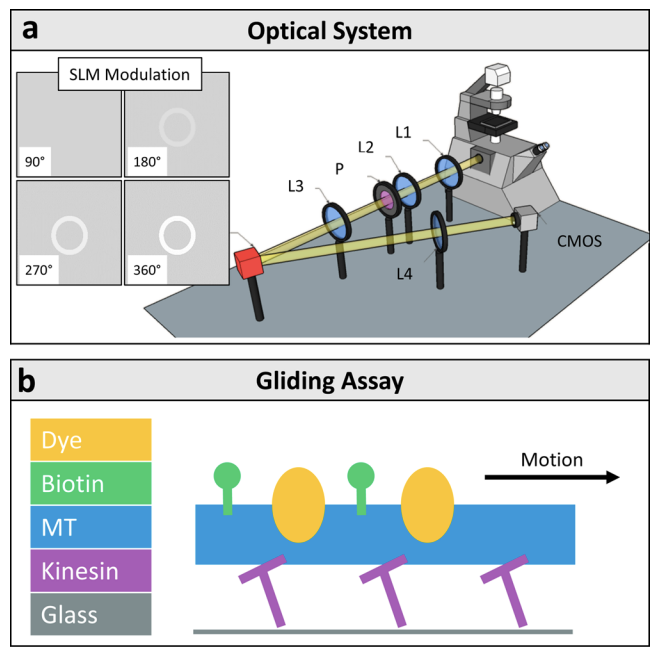LABEL-FREE IMAGING OF SINGLE MICROTUBULE DYNAMICS USING SPATIAL LIGHT INTERFERENCE MICROSCOPY
Mikhail E. Kandel,† Kai Wen Teng,‡,§ Paul R. Selvin,‡,§,∥ and Gabriel Popescu*,†,⊥
ACS Nano (2017) 11, 1, Pages 647–655 2016
![]()

Due to their diameter, of only 24 nm, single microtubules are extremely challenging to image without the use of extrinsic contrast agents. As a result, fluorescence tagging is the common method to visualize their motility. However, such investigation is limited by photobleaching and phototoxicity. We experimentally demonstrate the capability of combining label-free spatial light interference microscopy (SLIM) with numerical processing for imaging single microtubules in a gliding assay. SLIM combines four different intensity images to obtain the optical path length map associated with the sample. Because of the use of broadband fields, the sensitivity to path length is better than 1 nm without (temporal) averaging and better than 0.1 nm upon averaging. Our results indicate that SLIM can image the dynamics of microtubules in a full field of view, of 200 × 200 μm2, over many hours. Modeling the microtubule transport via the diffusion-advection equation, we found that the dispersion relation yields the standard deviation of the velocity distribution, without the need for tracking individual tubes. Interestingly, during a 2 h window, the microtubules begin to decelerate, at 100 pm/s2 over a 20 min period. Thus, SLIM is likely to serve as a useful tool for understanding molecular motor activity, especially over large time scales, where fluorescence methods are of limited utility.

